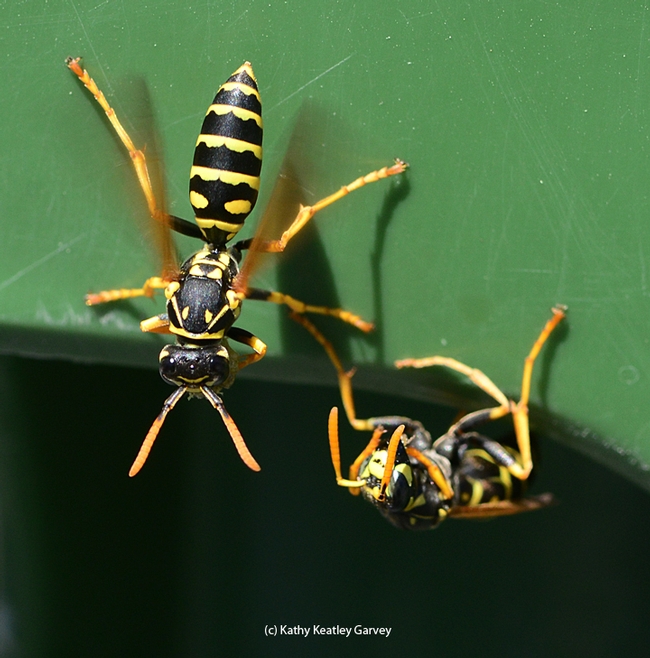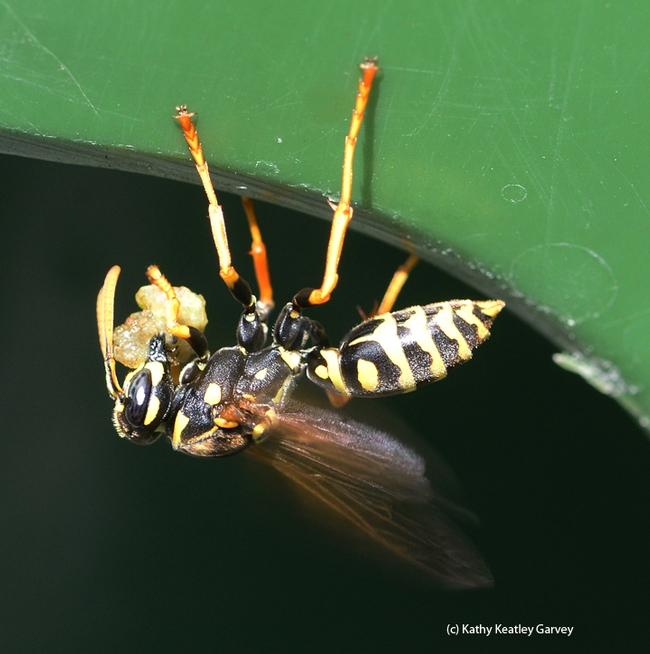It's National Pollinator Week. Do you know where your pollinators are?
If you're thinking bees, butterflies, beetles, birds (hummingbirds) and bats, you're correct.
But what about European paper wasps (Polistes dominula)? They're pollinators, too, says associate professor Amy Toth of the Department of Ecology, Evolution and Organismal Biology, Iowa State University, Ames, who researches wasps and coined the hashtag, #wasplove.
Several years ago she delivered an excellent presentation to our UC Davis Department of Entomomlogy and Nematology, and I later asked her 10 reasons why we should love wasps.
It's worth repeating:
- They are pollinators.
- They contribute to biocontrol of lepidopteran pests in gardens and on decorative plants.
- They have been shown to carry yeasts to winemaking grapes that may be important contributors to the fermentation process and wonderful flavors in wine!
- They are the only known insect (Polistes fuscatus) that can recognize each other as individuals by their faces.
- They are devoted mothers that will dote on their young all day long for weeks, defending their families with fury.
- Their social behavior, in my opinion, is the most human-like of any insect. They know each other as individuals, and are great cooperators overall, but there is an undercurrent of selfishness to their behavior,
- They are artists. They make perfect hexagonal nest cells out of paper, which they make themselves out of tree bark + saliva.
- They are extremely intelligent. They're predators, architects, good navigators, and great learners. Among insects, they have large brains, especially the mushroom bodies (learning/memory and cognition area of insect brain).
- They are beautiful, complex, and fascinating creatures!
That's Amy Toth's list. To that, I'd like to add one more: they are quite photogenic!
The European paper wasp, so named because of its European origin, is relatively new to the United States. Scientists tell us that the P. dominula was not recorded in North America until 1981. P. dominula was first discovered in the United States in the late 1970s near Boston, Mass. Entomologists worry that it is displacing the native species of Polistes wasps.
Interestingly enough, last year at this time--this very date--European paper wasps were building a nest beneath the overhanging lip of a recycling bin near the Mann lab on the UC Davis campus.
And today they're doing it again. Same place. Same bin. Same spot.
Wrong place. Wrong bin. Wrong spot. It won't be there for long.
Attached Images:

European paper wasps protecting the nest they're building on the lip of a recycling bin near the Mann lab, UC Davis campus. (Photo by Kathy Keatley Garvey)

European paper wasp chowing down on food on the lip of a recycling bin near the Mann lab, UC Davis campus. Another wasp delivered it to the guard. Maybe it's the remains of a caterpillar? (Photo by Kathy Keatley Garvey)